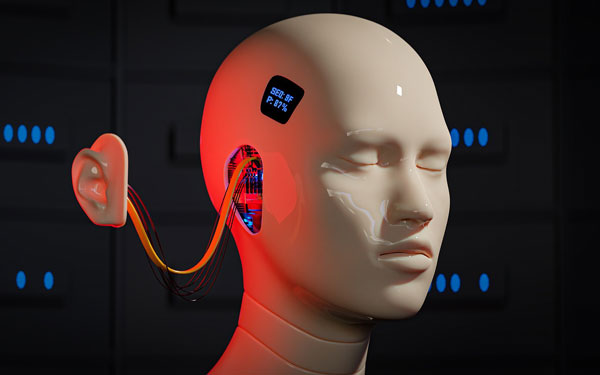Scientists build human-based sensory circuit model to study pain and touch

[A photo of a humanoid robot. Photo Credit to Pixabay]
A team of researchers has built a working human model of the body’s full sensory pathway in the lab—the first of its kind—offering a new tool to study how humans feel pain, touch, and temperature.
The study, published April 10 in Nature, details a system called the human ascending somatosensory assembloid (haSA), which links four lab-grown mini-organs representing key parts of the sensory circuit: the sensory neurons, the spinal cord, the thalamus, and the cerebral cortex.
Each component was generated separately using human induced pluripotent stem cells, and then physically combined into one system.
The result is a fully human lab model that mimics the natural pathway of how sensations travel from the body to the brain.
When researchers stimulated the sensory neurons with chemicals, they observed coordinated responses travel through the system, from one mini-organ to the next.
This movement of signals mirrored what happens in humans when feeling pain or touch.
The team also used viral tracing and imaging tools to track how neurons connected to each other.
They confirmed that neurons built the correct links between parts.
For example, sensory neurons projected to the spinal cord, which then passed signals to the thalamus.
To verify the signals were functional, researchers used calcium imaging and electrical recordings.
These methods showed not just individual activity, but synchronized firing across the four regions.
In short, the cells weren’t just alive;they were talking to each other in an organized way.
This model gives scientists a way to watch human sensory signals in motion, which was previously impossible using only cells in a dish.
Animal models, especially rodents, often don’t match how human pain circuits work, which has slowed drug development for pain and neurological disorders.
The research team discovered that certain drugs affected human cells differently than mouse cells.
One example was TNP–ATP, a drug that blocks pain receptors in mice but had little effect on the human neurons in hASA.
That kind of difference helps explain why many pain drugs fail in human trials after working in animals.
Beyond normal sensory function, the researchers used hASA to model what happens when pain genes go wrong.
They disabled SCN9A, a gene linked to pain detection, and found that the system lost its synchronized activity.
This is similar to what happens in people with rare conditions who can’t feel pain.
They also introduced a mutation in SCN9A known to cause extreme pain sensitivity.
In that version of hASA, the neurons became hyperactive and fired too often, simulating what happens in people with pain disorders.
These results show that hASA can model both healthy and disease states of the human sensory system.
It can reveal how genetic mutations affect neural circuits at a system-wide level.
The model also showed spontaneous synchrony, with bursts of activity that occur without external stimulation.
This kind of behavior had previously only been observed in newborn animals, and its appearance in hASA suggests the model might reflect early developmental processes.
The researchers believe this system could be used to study other disorders tied to sensory processing, such as autism or chronic pain.
Because the system uses human cells, it can also be adapted to test drugs more accurately, reducing the reliance on animal testing.
Looking ahead, researchers aim to improve the model by adding more cell types and better mimicking the full range of sensory responses.
They also plan to explore other pathways beyond the spinothalamic tract, which is the main route modeled in hASA.
Ultimately, this work shows that it’s now possible to build complex, human-specific neural circuits in the lab, which could transform ways of studying brain function, pain, and disease.

- Shinah Youn / Grade 11
- Colburn School

![THE HERALD STUDENT REPORTERS [US]](/assets/images/logo_student_us.png)
![THE HERALD STUDENT REPORTERS [Canada]](/assets/images/logo_student_ca.png)
